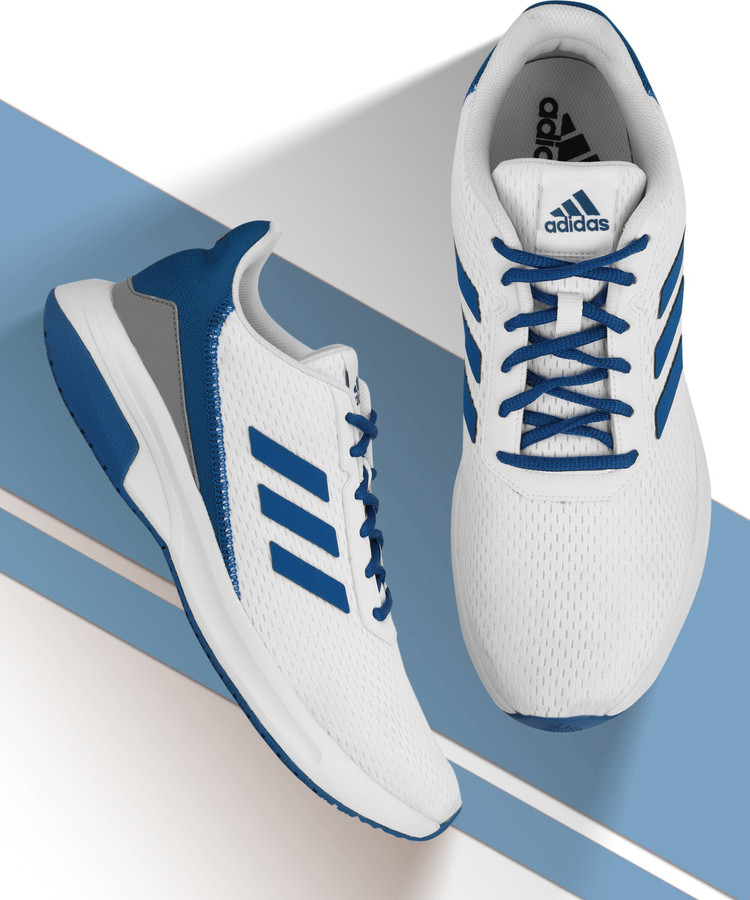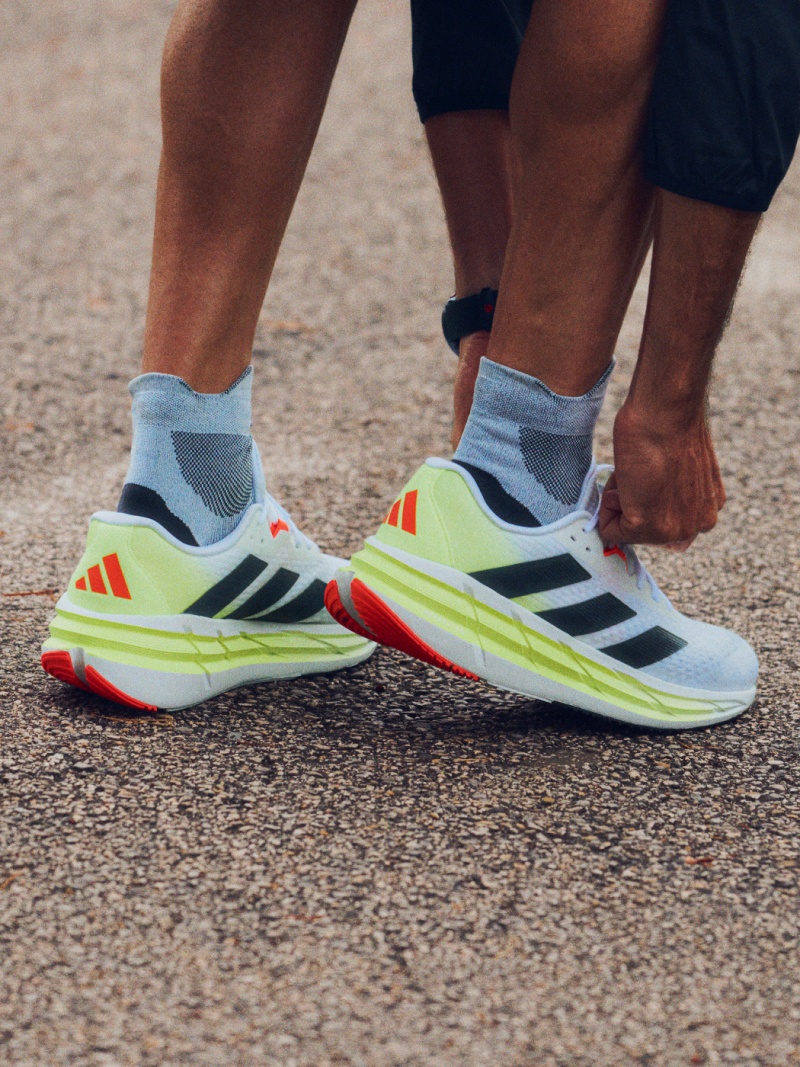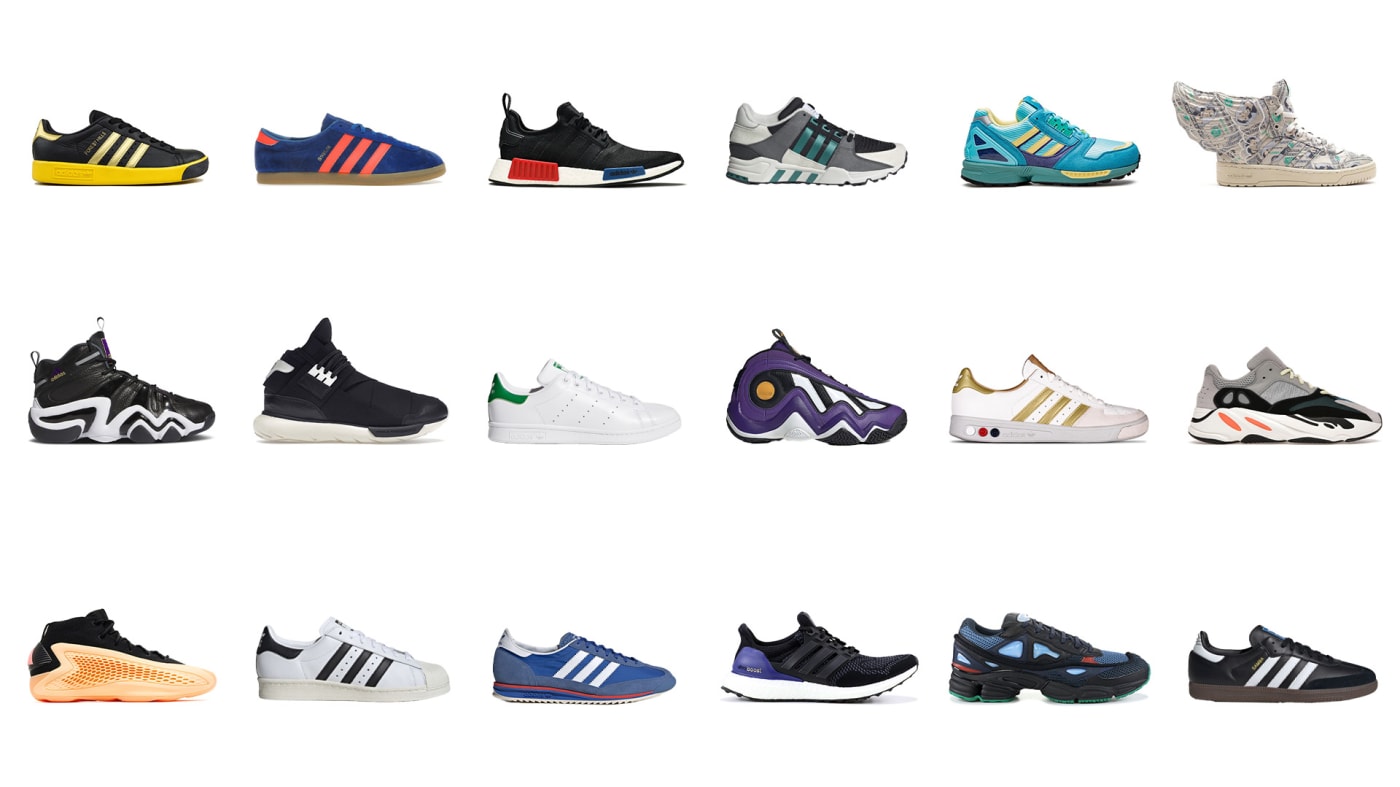Adidas stands as one of the most recognizable and influential footwear brands in the world. From its humble beginnings in a German laundry room to becoming the second-largest shoe company globally, Adidas has shaped sports culture, street fashion, and athletic performance for over 75 years. This comprehensive guide covers everything you need to know about Adidas shoes, from their rich history to cutting-edge technology and product recommendations.
The Global Footwear Giant: Adidas by the Numbers
Adidas commands an impressive position in the global footwear market. As of 2022, the brand holds a 15.6% market share, making it the second-largest shoe company worldwide and the biggest footwear brand in Europe. In the athletic shoes segment specifically, Adidas captures 15.4% of the market, while in sneakers, they hold 14.7%.

The numbers tell a compelling story of scale and influence. In 2022 alone, Adidas manufactured 419 million pairs of shoes and generated $13.2 billion in footwear revenue, representing a 3.1% growth from the previous year. The brand’s reach spans globally, with Europe, Middle East, and Africa (EMEA) being their largest market at $4.2 billion, followed by North America at $3.3 billion.
Interestingly, Adidas skews heavily male, with 73% of their market dedicated to men and only 27% for women – making it the most male-leaning major shoe company. This is reflected in their pricing strategy, with men’s shoes averaging $75 compared to $70 for women’s models.
From Brothers to Rivals: The Fascinating History of Adidas
The Dassler Brothers Era (1924-1949)
The Adidas story begins in 1924 when brothers Adolf “Adi” Dassler and Rudolf Dassler established the “Gebrüder Dassler Schuhfabrik” (Dassler Brothers Shoe Factory) in their mother’s laundry room in Herzogenaurach, Germany. Their innovative athletic shoes quickly gained recognition, with athletes wearing Dassler footwear to victory in the 1928 Amsterdam Olympics, 1932 Los Angeles Olympics, and the controversial 1936 Berlin Olympics.
The partnership thrived until post-World War II tensions caused the brothers to split. On August 18, 1949, Adolf founded Adidas (combining “Adi” and “Dassler”), while Rudolf established what would become Puma. This sibling rivalry would fuel decades of innovation and competition.
Breakthrough Moments and Innovations
The Miracle of Bern (1954): Adidas achieved legendary status when the German national football team defeated the heavily favored Hungarians in the 1954 World Cup final, wearing Adidas boots with revolutionary screw-in studs that provided superior traction on the wet field.
Expanding Beyond Shoes (1967): Adidas ventured into apparel with the Franz Beckenbauer tracksuit, becoming the first sports company to offer complete athletic wear systems.
FIFA Partnership (1970): Adidas began its long-standing relationship with FIFA by providing the official World Cup ball, the TELSTAR, designed specifically for black and white television broadcasts.
Cultural Impact (1986): Hip-hop group Run-D.M.C released “My Adidas,” marking the birth of non-athletic endorsements in the sporting goods industry and cementing Adidas’s place in street culture.
Modern Era Innovation (2000-Present)

The 21st century brought technological breakthroughs that redefined athletic footwear:
- ClimaCool (2002): Revolutionary 360° ventilation system
- Boost Technology (2013): Energy-returning cushioning created with BASF, providing 20% more energy return than standard soles
- Yeezy Partnership (2015): Collaboration with Kanye West created cultural phenomena and resale market dominance
- Futurecraft 4D (2017): 3D-printed midsoles using Digital Light Synthesis technology
- Sustainability Focus (2018-present): 100% sustainable cotton usage and commitment to recycled materials
Financial Performance: Revenue Trends and Market Analysis
Adidas’s financial journey over the past decade reveals both resilience and growth challenges:
Peak Performance (2017-2019): The brand reached its highest footwear revenue of $15.1 billion in 2019, driven by successful product launches and strong global demand.
Pandemic Impact (2020-2021): COVID-19 significantly affected operations, with revenue dropping to $13.7 billion in 2020 (-9.3%) and further declining to $12.8 billion in 2021 (-6.6%).
Recovery Phase (2022): Revenue rebounded to $13.2 billion, showing a 3.1% increase and indicating market recovery.
Regional Performance Variations: While Latin America showed explosive growth at +44.3% and North America grew strongly at +27.9%, Greater China experienced a significant decline of -29.0%, reflecting geopolitical and economic challenges.
The company’s net sales reached $11.4 billion in 2022, representing a 9.6% improvement from 2021’s $10.4 billion. Footwear accounts for 55.1% of Adidas’s total business, demonstrating the central importance of shoes to the company’s success.
Manufacturing and Global Supply Chain
Adidas operates a truly global manufacturing network, with 97% of all shoes produced in Asia. The production distribution as of 2022:
- Indonesia: 34% (142 million pairs)
- Vietnam: 32% (134 million pairs)
- China: 16% (67 million pairs)
- Other countries: 18% (76 million pairs)
This geographic diversification helps mitigate risks while leveraging each region’s manufacturing expertise and cost advantages.
The Cold Cement Construction Process
Most Adidas shoes use cold cement construction, the modern standard for athletic footwear. This process allows for lightweight materials and advanced cushioning systems:

- Upper Preparation: Steaming and lasting the shoe upper
- Sole Preparation: Stock fitting of outsole components
- Primer and Cement Application: Surface treatment for bonding
- Pressing Operations: Three-stage hydraulic pressing
- Cooling Process: Setting the adhesive bond
- Delasting: Removing the shoe last
- Quality Control: Final inspection and packaging
Product Categories: Performance vs. Lifestyle
Adidas Performance: Built for Athletes
The Performance line focuses on technical innovation and sport-specific functionality:
Running Shoes:
- Ultraboost: Premium Boost cushioning for maximum comfort and energy return
- Supernova: DreamStrike midsole technology for responsive running
- Duramo: Lightstrike cushioning for versatile training
- Galaxy: Cloudfoam technology for everyday comfort
- Switch FWD: Continental rubber outsole for superior traction
Tennis Shoes:
- Barricade: Maximum durability and lateral support
- Solematch Control: Enhanced court grip and stability
- Defiant Speed: Lightweight design for quick movements
Golf Shoes:
- Tour360: Boost technology with 360Wrap support system
- S2G: Waterproof leather with integrated spikes
Football/Soccer:
- Predator: Enhanced ball control with rubber elements
- Copa Mundial: Classic leather construction, still made in Germany
- Turf Series: Specialized for artificial surfaces
Adidas Originals: Where Sport Meets Style
The Originals line celebrates Adidas heritage while appealing to fashion-conscious consumers:

Iconic Classics:
- Stan Smith: The minimalist tennis shoe turned fashion staple (launched 1965)
- Superstar: Basketball shoe with signature shell toe (1969)
- Samba: Former football training shoe, now lifestyle icon (1950)
- Gazelle: Suede athletics shoe with retro appeal (1968)
- Campus: Basketball heritage with street credibility (1970s)
Modern Lifestyle:
- NMD (Nomad): Primeknit upper with Boost sole and distinctive blocks
- Ultraboost (Lifestyle): Performance technology in lifestyle-friendly designs
- Yeezy Line: High-fashion collaboration with Kanye West
- Human Race: Pharrell Williams collaboration
Revolutionary Technologies That Changed the Game
Boost Technology: The Energy Revolution
Introduced in 2013, Boost technology represents Adidas’s biggest innovation breakthrough. Created in partnership with BASF, Boost consists of thousands of energy capsules that provide:
- 20% more energy return than standard EVA soles
- Superior durability and temperature stability
- Consistent performance across various conditions
Primeknit: Engineered Precision
This innovative knitting technology creates seamless uppers that:
- Reduce waste by up to 60%
- Provide targeted support and breathability
- Enable precise fit and comfort zones
Other Key Technologies:
- Torsion System: Allows natural foot movement while providing stability
- Continental Rubber: Automotive-grade rubber for superior grip
- ClimaCool: 360° ventilation for temperature regulation
- Lightstrike: Ultra-lightweight midsole for responsive performance
- Bounce: Durable cushioning with good energy return
Sustainability Initiatives: Towards a Greener Future
Adidas has made significant commitments to environmental responsibility:
Recycled Materials Progress:
- 2022: 27 million pairs made with recycled ocean waste (50% increase from 2021)
- Current: 96% of footwear uses recycled polyester
- Goal 2024: 100% recycled polyester usage
- Since 2018: 100% sustainable cotton in all products
Partnership with Parley for the Oceans:
This collaboration transforms ocean plastic waste into high-performance footwear, with production growing from 5 million pairs in 2018 to 27 million in 2022.
The Resale Market Phenomenon
Adidas commands significant presence in the secondary sneaker market:
- 2019 Market Share: 29% of the resale market
- Average Resale Price: $295 (36% premium over retail)
- Yeezy 350 Impact: 18% market share with $280 average resale price
The Yeezy line, in particular, has created unprecedented demand, with releases often selling out within minutes and commanding substantial premiums on the resale market.
Sports Marketing and Athlete Endorsements
Basketball Presence:

Over the past four NBA seasons (2018-2022), an average of 11.5% of players have worn Adidas, though this represents a decline from the peak of 15.8% in 2018-19.
Global Sport Sponsorships:
Adidas maintains partnerships across multiple sports:
- FIFA World Cup (official ball supplier since 1970)
- UEFA European Championship
- Major League Soccer (MLS)
- Individual athlete sponsorships across various sports
Choosing the Right Adidas Shoe: A Buyer’s Guide
For Running:
- Casual runners: Duramo, Galaxy for comfort and value
- Serious runners: Ultraboost, Supernova for performance
- Marathon training: Adizero series for speed work
- Trail running: Terrex line for outdoor conditions
For Tennis:
- Recreational players: Court series for comfort
- Competitive players: Barricade for durability and support
- All-court players: Solematch Control for versatility
For Lifestyle:
- Minimalist style: Stan Smith for timeless appeal
- Retro fashion: Samba, Gazelle, Campus for heritage looks
- Modern street style: NMD, Ultraboost for contemporary fashion
- High fashion: Yeezy line for exclusive designs
Budget Considerations:
- Under $100: Galaxy, Grand Court, basic Originals models
- $100-200: Ultraboost, NMD, premium Originals
- $200+: Yeezy, limited editions, premium collaborations
Future Outlook and Market Trends
Challenges and Opportunities:
- Gender Balance: Opportunity to grow the 27% female market share
- China Recovery: Addressing the 29% decline in Greater China market
- Digital Integration: Expanding app-based services and customization
- Sustainability Goals: Achieving 100% recycled materials by 2024
Emerging Technologies:
- 4D Printing: Expanding Futurecraft applications
- Smart Shoes: Integration of performance tracking technology
- Customization: Made-to-order and personalization services
Frequently Asked Questions (FAQ)
Q: What makes Adidas different from Nike and other competitors?
A: Adidas differentiates itself through several key factors: Boost technology provides superior energy return compared to most competitors; strong heritage in football/soccer with continuous innovation; the three-stripes design is instantly recognizable worldwide; focus on sustainability with recycled ocean plastic and materials; and strong lifestyle/fashion collaborations like Yeezy that create cultural impact beyond sports.
Q: Are Adidas shoes worth the price?
A: Value depends on your needs and budget. Performance models like Ultraboost justify their $180+ price through advanced Boost technology, Primeknit construction, and durability. Lifestyle models like Stan Smith ($80-100) offer excellent value for timeless design and quality. Premium lines like Yeezy command high prices due to limited availability and fashion status. Generally, Adidas offers good quality-to-price ratio compared to competitors.
Q: How do Adidas shoes fit compared to Nike?
A: Adidas typically runs true to size, but fit varies by model. Generally: Ultraboost runs slightly large (consider going down 0.5 size); Stan Smith and Superstar run true to size; NMD can run small (consider going up 0.5 size); Performance running shoes usually fit true to size. Always try on or check specific model reviews, as foot shape and personal preference affect fit significantly.
Q: Which Adidas technology is best for running?
A: For running, Boost technology is generally considered the best, offering superior energy return and comfort for long distances. Lightstrike is excellent for speed work and racing due to its lightweight properties. Cloudfoam provides good comfort for casual runners at lower price points. Choose based on your running style: Boost for comfort and daily training, Lightstrike for racing and speed work.
Q: Are Adidas shoes good for wide feet?
A: Some Adidas models accommodate wide feet better than others. Best options include: Ultraboost (roomy toe box), Stan Smith (classic leather construction stretches), Campus and Gazelle (wider last), and many Performance running shoes. Avoid: tight-fitting models like some NMD versions and narrow lifestyle shoes. Always check specific reviews for wide-foot compatibility.
Q: How long do Adidas shoes typically last?
A: Lifespan varies by model and usage: Running shoes typically last 300-500 miles or 6-8 months of regular use; Lifestyle shoes (Stan Smith, Superstar) can last 1-3 years with normal wear; Performance sports shoes last 6-12 months depending on activity intensity; Premium materials and construction generally increase durability. Proper care, rotation with other shoes, and appropriate usage significantly extend lifespan.
Q: What’s the difference between Adidas Performance and Adidas Originals?
A: Adidas Performance focuses on sport-specific functionality with advanced technologies like Boost, Primeknit, and sport-specific features. Uses the modern three-stripes logo. Adidas Originals celebrates heritage designs and street fashion, using the classic Trefoil logo. Originals prioritizes style and lifestyle appeal over pure performance, though many maintain good comfort and quality.
Q: Are expensive Adidas collaborations worth buying?
A: Depends on your priorities. Fashion/Collection value: Yeezy and limited releases often appreciate in value and offer unique designs. Performance value: Usually not superior to standard Performance models. Investment potential: Some limited releases increase in resale value, but this shouldn’t be the primary reason to buy. Personal satisfaction: If you love the design and can afford it without financial strain, they can be worth it for the style and exclusivity.
Q: How can I tell if my Adidas shoes are authentic?
A: Check these key indicators: Quality of materials – authentic Adidas uses high-quality materials with consistent stitching; Three-stripes logo – should be precisely aligned and proportioned; Size tags – include specific formatting and information that’s consistent with authentic pairs; Boost technology – real Boost feels soft and responsive, fake versions often feel hard or inconsistent; Purchase source – buy from authorized retailers, official Adidas stores, or trusted resellers with authentication services.
Q: What should I consider when buying my first pair of Adidas shoes?
A: Consider these factors: Purpose – lifestyle wear, specific sports, or general fitness; Budget – Adidas offers options from $60 (basic models) to $300+ (premium/limited editions); Fit preference – try on different models as sizing varies; Style preference – classic (Stan Smith), modern (Ultraboost), or trendy (NMD/Yeezy); Technology needs – Boost for comfort, Lightstrike for performance, or basic EVA for budget-friendly options. Start with versatile models like Stan Smith or Ultraboost that work for multiple occasions.
Q: How does Adidas compare in terms of sustainability?
A: Adidas is a leader in footwear sustainability: Recycled materials – 96% of shoes use recycled polyester as of 2022, aiming for 100% by 2024; Ocean plastic initiative – partnership with Parley produces millions of shoes from ocean waste annually; Sustainable cotton – 100% sustainable cotton since 2018; Carbon neutrality – commitment to become carbon neutral; Transparency – publishes detailed sustainability reports. They’re ahead of most competitors in environmental initiatives, though improvements are ongoing industry-wide.
Q: Should I buy Adidas shoes online or in-store?
A: Online advantages: Better selection, often better prices, convenient returns, access to limited releases. In-store advantages: Try before buying, immediate gratification, expert fitting advice, see actual colors and materials. Recommendation: For first-time buyers or new models, try in-store then buy online if preferred. For familiar models or limited releases, online is usually fine. Always check return policies when buying online, especially for fit-critical purchases like running shoes.


